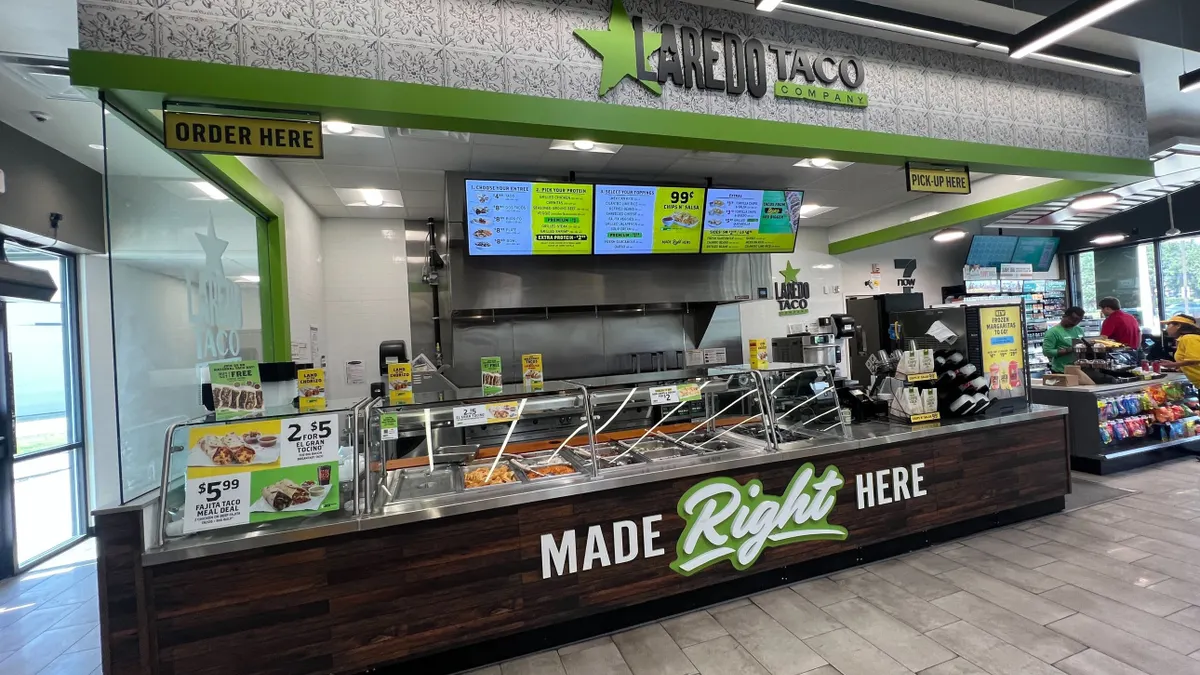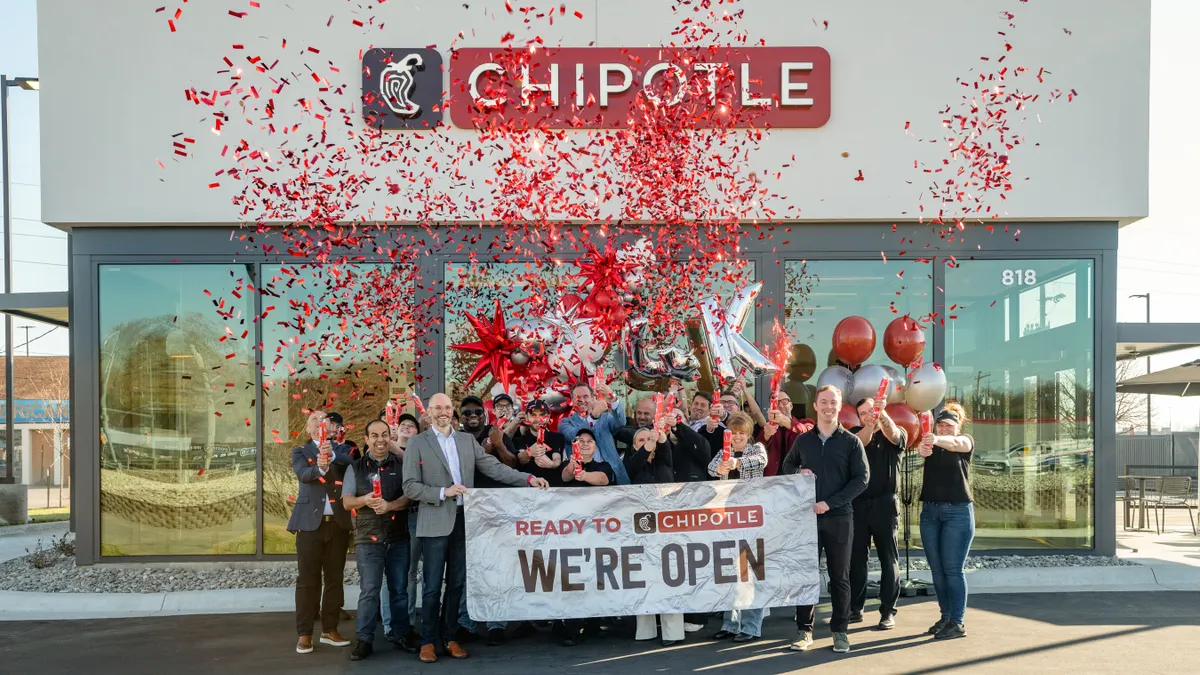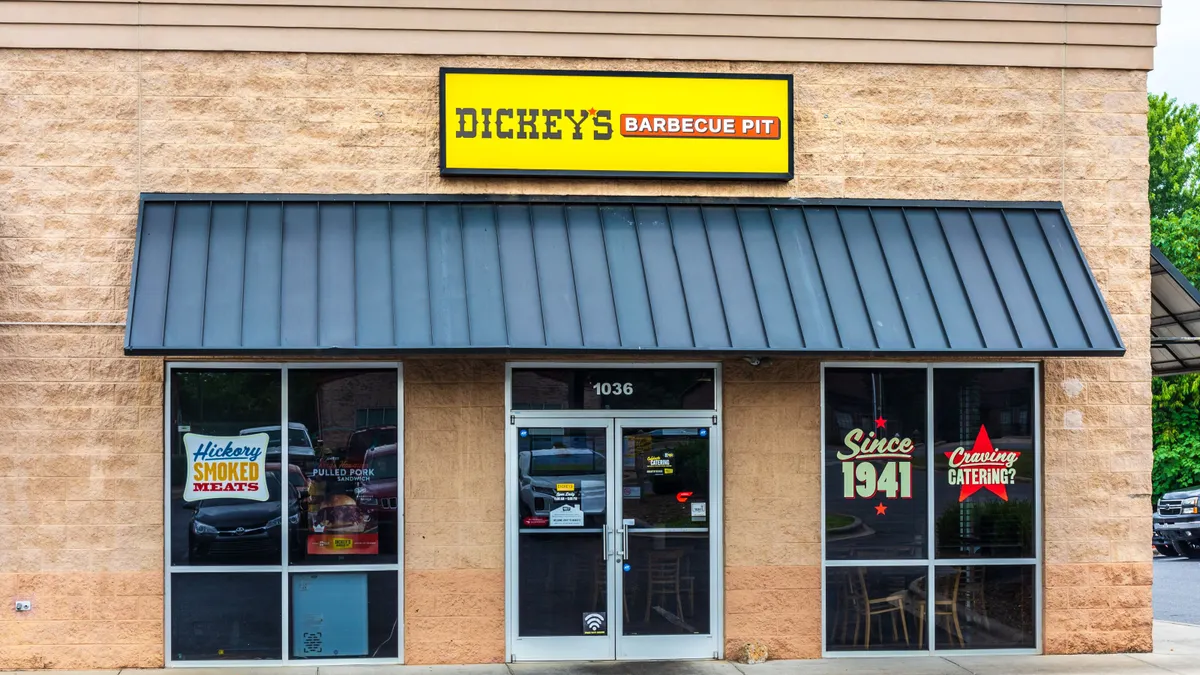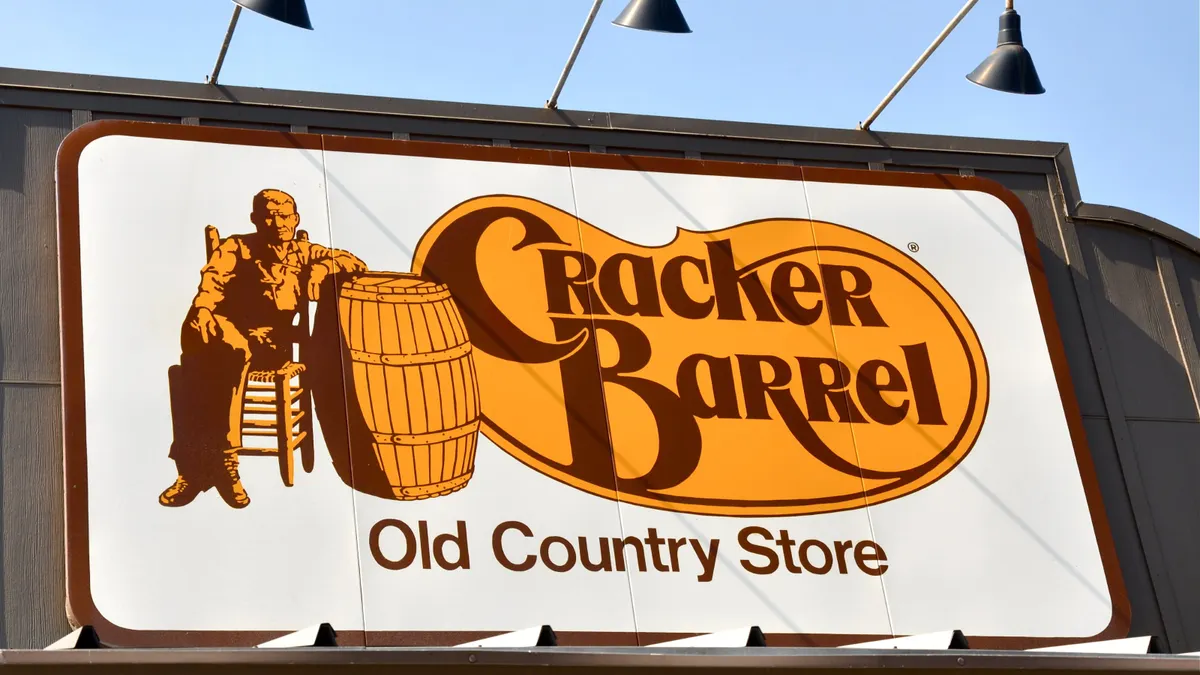Lunch Break is a series of Q&As with restaurant leaders about how their brands are overcoming industry challenges.
In 1994, Firehouse Subs opened its first location in Jacksonville, Florida. Twenty-five years later, it's a 98% franchised system with nearly 1,200-unit chains around the country. The fast casual sandwich chain, known for its traditional firehouse decor, has undergone a makeover in its technology suite to improve its efficiencies and make things easier for operators and staff. Among the biggest changes occurred 18 months ago with the deployment of a learning management software that digitized educational resources, allowing corporate to track employee progress.
Next up is a web and app refresh later this year, which it hopes will make the online ordering experience similar to the in-store experience. The company is also testing a prototype that leverages off-premise sales, which now make up a majority of customer purchases. Rich Goodman, who has been with Firehouse Subs for eight years, six as its VP of operations services, has been integral to its technological deployments.
Restaurant Dive spoke to Goodman about how these changes have improved operations, the status of its prototype and what challenges he had in implementing these technologies.
This interview has been edited for brevity and clarity.
RESTAURANT DIVE: How has technology become a part of your operations strategy?
RICH GOODMAN: The first is the guest facing and then the second is back-of-house. A lot of restaurants are going down the path of kiosk ordering within the restaurant. While we’ve talked about kiosks, we’re not 100% sold on it yet. We haven’t seen the tremendous success that we thought we would looking at some of the competition. Instead, we’re focused on making our web and app experience be the best it possibly can. We’re about to launch a new app, which we partnered with enterprise technology company NCR on, for our online ordering experience where basically everything you can do at the front counter you can do on the app. And the look and feel of the app is almost like looking at our menu board now. We hope to launch this probably toward the end of Q2 calendar year, maybe the start of Q3. Functionally it’s working the way we want it to be, but want to make sure from an ADA standpoint, we’re 100% compliant.
What is different about this new app?
Goodman: First off it is the visual appeal. If you were to go on our app today, or even on our website, it doesn’t look anything like it does in the restaurant. That was the first step to make imagery the exact same and then add the ability to customize and offer the combos. There will be the ability to save and store names and previous last orders.
A very big piece of our brand culture is our philanthropy, which is our Firehouse Subs Public Safety Foundation. While every guest that comes into the restaurant has the opportunity to round up to the next dollar and donate to the foundation, you couldn’t do that online. When more than 50% of your guests are eating off-premise, you’re losing a big piece of that opportunity.
What are some technologies that are really helping improve operations?
Goodman: Our biggest back-of-house transition took place about a year and a half ago when we added a learning management system software. For 25 years, learning took place with notebooks and manuals and pencil and paper. There were some intranet learning courses, but it was very clunky. We partnered with a learning management software company, called Tortal, and we now have the type of learning that the different generations that work in our restaurants today can understand. It can all be done off of any mobile device or at a desktop. It’s all short courses and quizzes that use gamification. There are fun ways to learn. We have all of our videos on Fire Academy.
It is a true learning platform that has trackability as well. We know every restaurant, every employee that’s logged in... what courses they’ve taken. It truly helps with quarterly limited-time offering promotions. We send out the procedures, and we can see how many restaurants have engaged their crew to learn and understand what has taken place and what they need to do to execute this new sandwich. That is probably the biggest change in back-of-house. We’re into this program about 18 months. We actually have statistics that show that those restaurants that are engaged end up with better performance.
Other technology is our point-of-sale system, which we’re in the process of updating right now. We’ve had a system, NCR RPOS, and we are transitioning to NCR Aloha. The advantage here is from a cashier and guest standpoint, it’s going to be a much smoother transaction. The old system uses what we call full script where cashiers ask guests questions in a certain order. The guest can’t move on to the second sandwich if we don’t answer questions about the first sandwich in a certain order. With the new platform it is based on keywords and conversational ordering. The guest can order any which way they like to order and our cashiers just follow along with the guest and enter in the information as the guest described.
For our over 50 drive-thrus, we have order confirmation boards that allow the team member to ask the guest to take a look at the screen and ask, 'Is that how you want the sandwich?' That is not unique to quick-service restaurants, but it kind of unique to fast casual, where we fall. This level of restaurant is just now getting into the whole drive-thru world. Most people when they think of drive-thru want it quickly and fast. We can be faster, but we’re never going to be as fast as some quick-service restaurants. One of the latest things in the technology, new to us, is the timers at drive-thru that are clocking the cars' amount of time spent in line. It used to be just a simple timer you’d read at the restaurant and pull reports. With newer technology, that information goes to a website where everyone who is using that equipment can compare themselves to their peer group within the Firehouse brand. It is one of those examples where competition is great. They want to be the fastest and friendliest.
What have been some challenges in implementing new technologies and how have you overcome them?
Goodman: First and foremost, everything comes with a cost. When the cost is borne by the corporation — like switching over to the fee that we pay for a learning management system — I have to convince the executives here that it’s worth the money to spend to license and go under contract with the company. When it’s a cost borne for the owner/operator, say some of the examples on the drive-thru, I have to be able to justify a return on investment that if you do this, your results could be this.
Second one is making sure everything works and plays nice together, like when we're rolling out the new mobile ordering app. How did that interface with our cash register system, and how does the money balance and does it take the right credit cards? The technology is wonderful, but when they all have to talk to each other, that is a challenge.
The biggest challenge is getting that buy-in. When you’re in a system that is 98% franchised, you don’t have that authority to just go in and say do it because I said you need to do it. You do it because it's the right thing to do. For our learning management software, it was showing franchisees by testing it in our corporate-owned restaurants for close to a year ahead of time and we got lots of testimonials by our corporate GMs. You got your crew members up to speed quicker so it saved that training downtime where you’re just paying them to learn. They learn quicker and become more efficient and proficient in their positions. Anecdotally, they felt like people were not leaving us.
Firehouse Subs was testing a store prototype last year. How has that new design been going and what have you learned so far?
Goodman: When the guest walks in, it's a completely different look and feel. In our traditional locations you walk down the whole front counter to get to the cashier in the far end and work your way back and you’re kind of in the middle of dining room. In the prototype, it's more of a traditional walk-in and the kitchen is behind the cash registers. The entire decor has been upgraded to give it much more of a warm, less-QSR type feel to it. We don’t have a lot of promotional material hanging. We really speak about our community involvement and our foundation. There is a community table for groups to sit at. The pickup area for takeout is built-in now instead of racks sitting out. It was kind of an afterthought as things changed and more and more people take their food to-go. We were kind of playing catch up with that by using a rack out there. The beverage bar looks different. Our sauces are now out next to the beverage bar instead of on the front counter.
When our founders started, there were only a couple of people working behind the counter whereas today it is a production line and there is a lot of throughput, but it is not designed that way. We designed it where everything starts at the far back and works its way forward on two separate lines that meet together. Each line does its own thing. It’s very functional so to speak. And then we’ve got some new equipment where we steam our meat and cheese to give it that nice, hot, wonderful flavor Firehouse Subs is known for. We have new steamers as well as high-speed toasters in there that shave a full minute off of our service time.
Will this be rolled out to the entire system?
Goodman: It's still a little early to say definitively. We’re leaning that way. We've got a self-imposed deadline of the end of March to make a decision. We hired a third-party to come in and do some studying for us on the guest viewpoint. We also use our guest satisfaction survey where we get tons of data. There's an invitation on the bottom of the receipt to go on firehouselistens.com and fill out a survey about your experience. So we’re monitoring that and comparing that to other experiences.
We do know we're going to take a lot of learnings out of this and we’re going to implement a lot of the finishing work that has been so well received [like] the design, the kitchen. Whether or not we’re going to replicate the exact same prototype everywhere, that is what we’re still going to wait and see.
It goes back to what I said earlier, do we see a return on investment? This restaurant is very successful. We can build all new restaurants this way, but what do we do when our existing restaurants come and their agreement is over and it is time to renew? Do we ask them to do this new image and prototype in its entirety? If so, what is their return on investment for it? Those are some of the challenges.
How do you anticipate technology will dictate your growth strategy and operations going forward?
Goodman: We actually have a [technology] committee made up of franchisees, area reps and headquarter people and their role is to constantly stay on top and challenge headquarters to lead the way on the technology standpoint. There are things like kiosks we’re still going to look into and improving the loyalty program that we have.
What more can we do to make drive-thru better? The results on our existing drive-thrus is it is growing on its own. The more restaurants that open a successful drive-thru, the more we get requests to do drive-thru. So we need to make sure we’re staying on top of the technology, like the headsets people use to communicate, the timers, the order confirmation board.
We just rolled out, at the beginning this year, consumer-facing Wi-Fi in all of our restaurants. We have a social digital team that is their world is to live and work in the whole world of Facebook and Twitter. I think of all that as technology.
Trying to stay ahead of technology is a tough task. Right now I just want to catch my breath to make sure that everything we have in the works right now comes to fruition and we execute it.



















